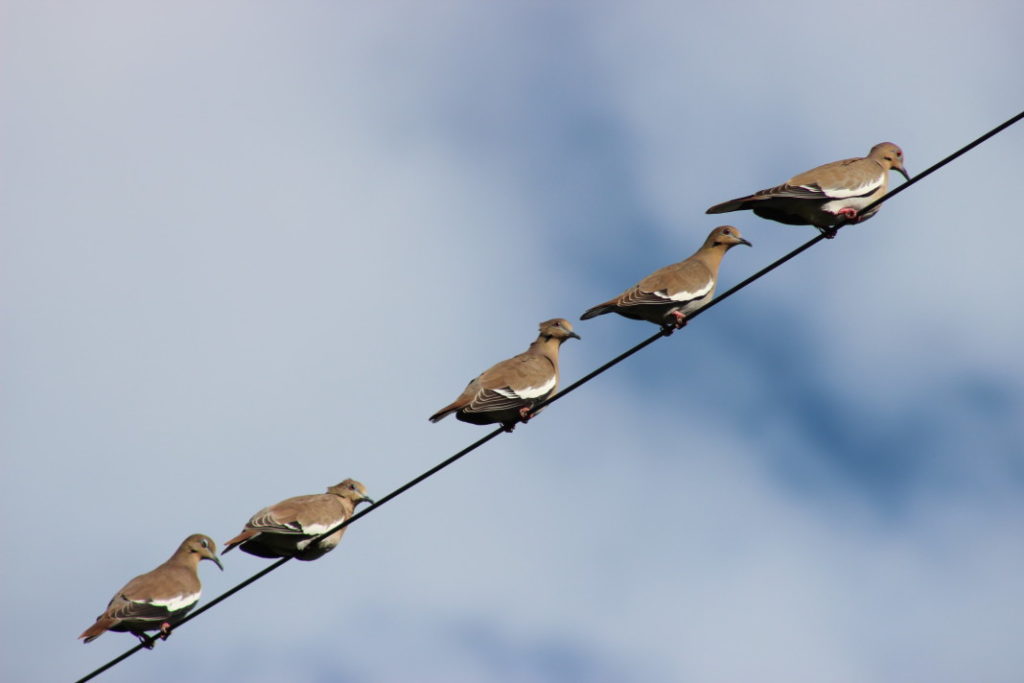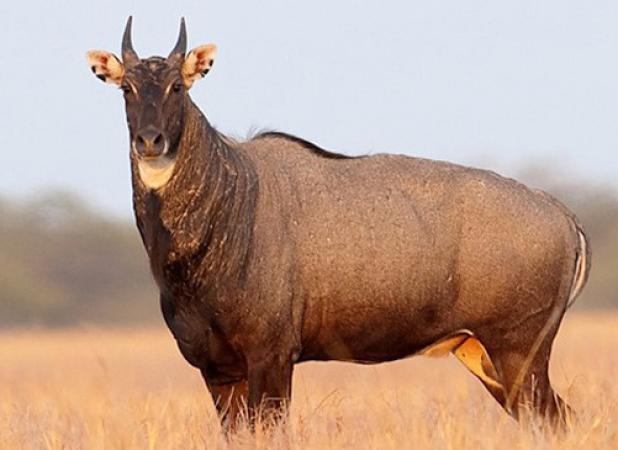The Rio Grande Valley is unlike any other place in the Lone Star State.
Fresh citrus and distinctive cuisine abound in absolute deep South Texas, in addition to this area being the birding capital of the state – if not the world – as the warm climate harbors hundreds of migrating species annually.
When discussing hunting opportunities, the usual suspects are involved. Yes, there are white-tailed deer hunts for youths and adults, and the dove hunting for whitewings is nothing short of exceptional.
However, there also are some distinctive hunting opportunities that aren’t found anywhere else in Texas, including for one prized exotic that has come to command hefty price tags on well-known hunting hot spots like the King Ranch just up the road.
Here’s a look at the top public hunting areas in “The Valley.”
Las Palomas Wildlife Management Area
Las Palomas, unlike some other WMAs in other parts of Texas, is actually a combination of different tracts that aren’t connected. The one that typically draws the most attention from hunters is the Arroyo Colorado Unit, a roughly 900-acre tract in Cameron County just northeast of Harlingen.
The area had been farmland but since being obtained by Texas Parks & Wildlife has been moved back toward a brushy area with the re-establishment of native vegetation.
“Las Palomas is kind of the umbrella term for the areas we have down here and then each unit is separate, like Arroyo Colorado,” said Jimmy Stout, Area Manager for Las Palomas Wildlife Management Area. “We focus primarily on bird hunting down here. White-winged dove season and mourning dove season are really big in the Valley.”
While small, the overall Las Palomas WMA harbors a variety of game, Stout noted.
“We do have draw deer hunts on the Arroyo Colorado and then we have another area, the Longoria Unit, where we do draw hunts for javelina,” he said. “We have three youth deer management hunts on the Arroyo Colorado, and then we have two youth-either hunts, which are rifle hunts. Those are all free hunts for the youth hunters who are selected through the online draw system.
“Then we have adult deer hunts at Arroyo. One is what we call the GDE (gun deer, either sex), and then we have a week-long archery hunt for adults as well. Overall we’ve got seven different weekends and holiday timeframes that we allow for deer hunting at the Arroyo Colorado.”
Stout said that the deer-hunting opportunities are managed specifically to reach harvest initiatives and to provide a hunting outlet for local hunters, too.
“The Arroyo is a small unit but it’s divided into 10 compartments and each compartment has a deer blind and a deer feeder. The way we run things here is we have a hunter orientation for those that are drawn and then we also do standby opportunities,” Stout said. “What I normally do is I have the state draw six slots for each hunt for me and then that leaves me four open blinds for standby opportunities. That allows folks to come down from Houston, Austin or San Antonio, or we can have locals come out the morning the hunt starts and we draw for the openings. At times we do have the original hunters who are drawn that may decline to show up, so that opens up even more hunting opportunities.”
Stout noted that one key component in deer hunting success elsewhere comes into play in a big way in the Valley, albeit much later than areas to the north.
“We’re very rut-dependent down here for deer hunting,” he said. “It can be hit or miss as far an antler quality in some years. Usually around Christmas is when we typically see our better bucks. We don’t have a lot of big, quality deer that some areas may have, like the Chaparral. We tend to focus more on youth hunting and getting kids out there and hooked on the outdoors … getting them their first harvest.”
While Stout noted that it’s not uncommon for an entire hunting season to go by without seeing what most hunters may classify as the “buck of a lifetime,” there are some good deer that have been taken in recent memory.
“For being a smaller hunting area in the urban Rio Grande Valley (about 7 miles from Rio Hondo), we do have some good bucks taken. A kid harvested a 158 (Boone & Crockett) several years ago. Then this past year the biggest deer a hunter took scored in the 140s,” Stout said.
While deer hunting is kind across most of Texas, the Valley is the prime spot for dove hunting, especially for whitewings, which have grown overall as a population and migrated north in the past two decades. However, the Valley is still the top dove destination in Texas, and the associated costs to come down for a long weekend and bag a few limits is a fraction of what a successful dove shoot may cost elsewhere.
“We run all of our small game hunting opportunities through the Annual Public Hunting program. You just have to buy that permit ($48) and you can come and go on all of our units throughout the hunting season when they’re open. We start hunts with doves in September all the way through chachalaca season (through the end of February),” Stout said. “Whitewing season is very popular with us down here. We do have sunflower food plots that turn out well most years. Then we have a slight draw down with mourning dove hunting. We also have some quail in good years and we have folks who will bring out their dogs and work them a little bit. We also offer rabbit hunting so some folks will come out for that. Then we have the rare chachalaca hunter.”
One attractive aspect of public hunting the Valley is the proximity of places to eat, stay and play not far from deer and dove field.
“There are plenty of local places for accommodations (in Harlingen) but we do allow camping out there (Arroyo Colorado) if people want to stay on site during their hunts,” Stout said.
Information: tpwd.texas.gov/huntwild/hunt/public.

Lower Rio Grande Valley National Wildlife Refuge
The area where the Rio Grande meets the Gulf of Mexico is considered one of the most biologically diverse regions in North America, making this Refuge a distinct ecosystem all its own.
The Refuge was established in 1979 with a management priority to protect biodiversity, according to U.S. Fish & Wildlife. Chief among the management is the protection of the endangered ocelet, fewer than 50 of which are estimated to reside in extreme South Texas. The Refuge encompasses tens of thousands of acres, harboring more than 1,000 varieties of plants and more than 500 species of birds.
The Refuge also has some excellent hunting opportunities that are open to the public through the online draw system. The Refuge previously had its own draw system up until last hunting season, with the federal land holding entering into an agreement with TPWD to run its hunt drawings through the state agency’s online framework.
“We’ve been running hunts on the Lower Rio Grande Valley National Wildlife Refuge since 2000, but last year was the first that we used Texas Parks & Wildlife’s online draw system to place hunters in our deer and exotic hunts,” said Refuge biologist Imer De La Garza. “It has been a good partnership and it has gotten the word out about all the hunting opportunities we have. We previously did all the drawings through the mail. The demand for our hunts has gotten bigger each year, so it’s a good thing for anyone who may be interested in entering our draws.”
De La Garza noted that despite its immense overall size, the Refuge has relatively smaller parcels open to hunting.
“We’ve got about 7,000 acres over two tracts that are open to our hunts at the Refuge,” he said.
The drawings that have piqued the interest of hunters from across Texas now that hunts are drawn via TPWD are those for “blue bulls.”
“The nilgai hunts in particular have generated more and more interest, especially because nilgai are isolated to extreme South Texas,” De La Garza said. “People see where it says ‘unlimited nilgai’ on the hunt application and they get excited. There’s good and bad with that though. You can shoot them, but then you also have to pack them out.”
The massive antelope with Asian origins and dubbed blue bulls for their distinctive coats were imported into the King Ranch in South Texas in the 1930s and have thrived on the plains of the brush country and farther down toward the Rio Grande. The population has grown from 20 to 30 animals to upward of 60,000, according to TPWD records, and free-ranging nilgai can roam long distances in search of food sources.
Bulls don’t have large antlers – the biggest headgear will be less than a foot long curving off their heads – but the largest of these antelope can exceed 700 pounds, making higher-caliber rifles such as a .338 or .375 vital in bringing down the hefty quarry. Most successful hunts are done safari style and spot and stalk, though the animals provide a challenging hunt due in large part to good eyesight and hearing, and those that have been hunted quickly grow wary of encroachment.
“These hunts have opened a lot of opportunity for all Texans, not just those folks who live down here in the Valley,” De La Garza said. “We’ve also been getting more and more applicants from all over the country, too. It has gotten much more competitive in the draw process.”
While nilgai have caught the attention of many hunters – those hunts typically run into the thousands of dollars when conducted through private outfitters – the Refuge also has some excellent opportunities for whitetail hunters.
“We offer a number of deer hunts on the Refuge, in addition to the exotic-only hunts for nilgai,” De La Garza said. “We’ve got archery and rifle hunts for deer, as well as shotgun and muzzleloader hunts. Included in those are the youth-only firearm hunts. Those hunters who are drawn can take two deer, one of which can be a buck. In addition, those drawn hunts also include the opportunity to take unlimited nilgai and feral hogs.”
In addition to the Lower Rio Grande Valley National Wildlife Refuge, the Laguna Atascosa National Wildlife Refuge also offers similar hunt frameworks for nilgai and whitetails, with the hunts also being drawn through the TPWD online system.
As with other public hunts on state lands, there are certain requirements that come with hunting federal refuges. To participate, hunters must have a permit (TPWD issued), a valid hunting license, proof of hunter’s education certification and a picture ID on them while in the field.
Information: www.fws.gov/refuge/Lower_Rio_Grande_Valley/visit/hunting.html.




















